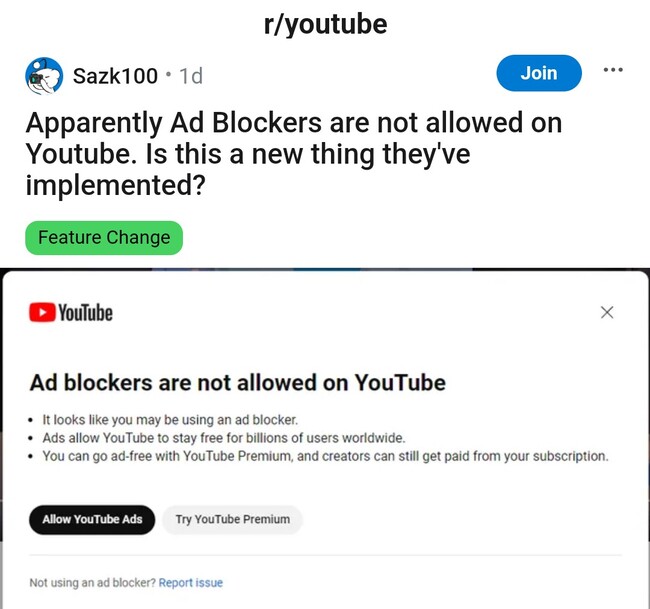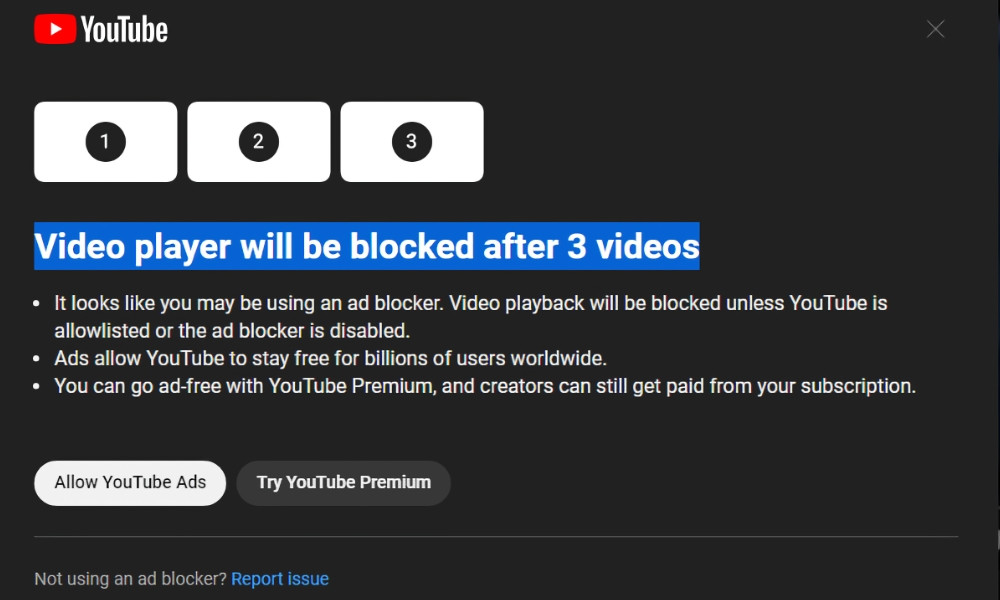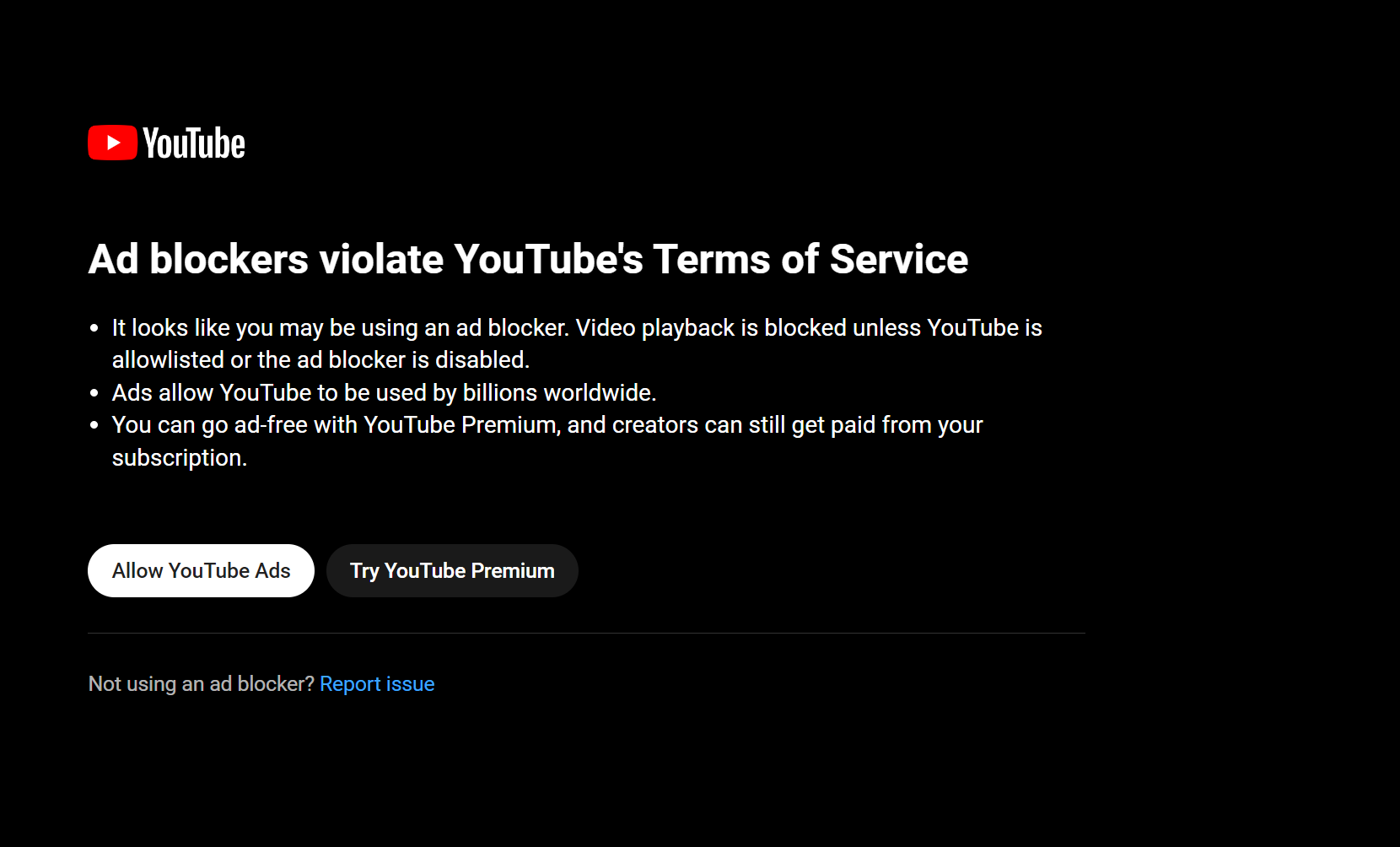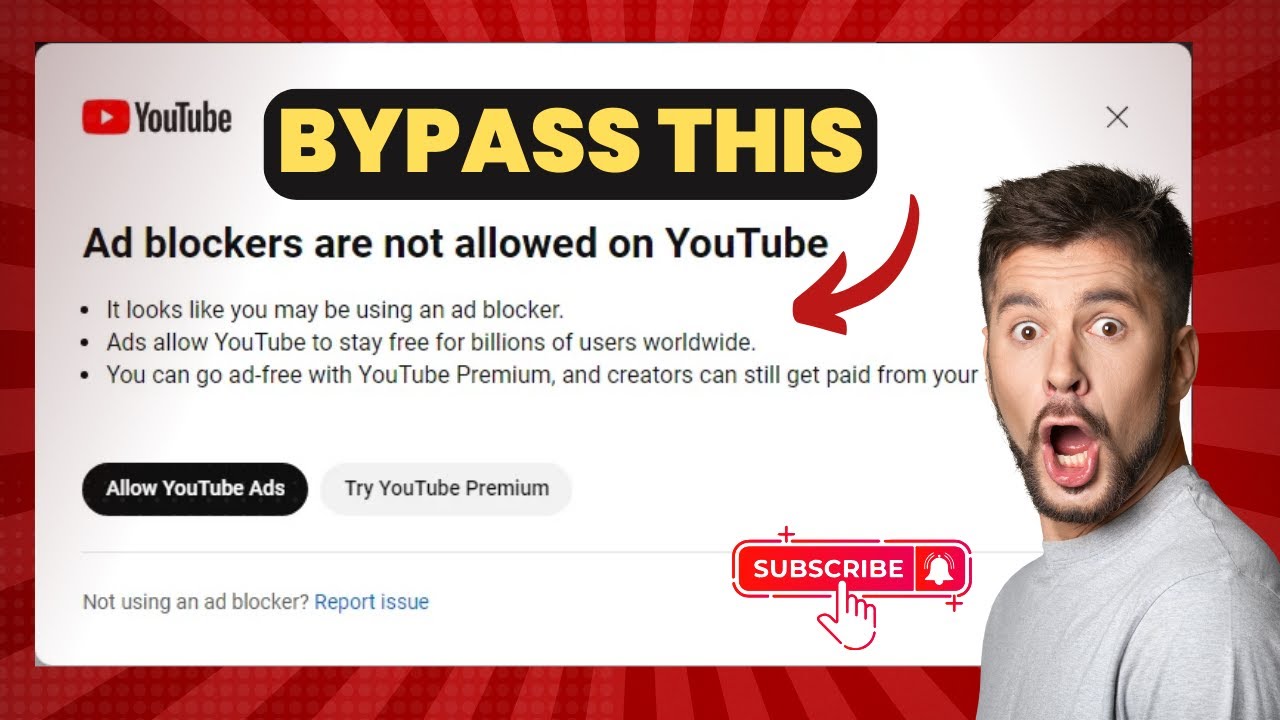YouTube has become a significant part of our daily lives, offering countless hours of entertainment, education, and inspiration. However, if you’re like many users, you might find ads disruptive to your viewing experience. This has led many users to turn to ad blockers, but YouTube has developed methods to detect these blockers. In this blog post, we’ll explore the intricacies of
Understanding YouTube's Ad Detection Mechanism

You might be wondering how YouTube knows you’re using an ad blocker. The truth is, their detection mechanism is quite sophisticated. Here’s a breakdown to help demystify it:
- Script and Element Blocking: YouTube’s ads rely on certain scripts and elements that run during the video playback. When an ad blocker is activated, these scripts are prevented from executing, raising a red flag for YouTube.
- Network Requests Monitoring: YouTube continuously checks for network requests made during your session. If it notices that certain requests (typically those related to ads) are blocked or missing, it assumes an ad blocker is in use.
- Behavioral Analytics: YouTube collects data based on user behavior. If you consistently skip ads or enter videos where ads should have played, it could lead to an assumption that you are using an ad blocker.
- Cookie and Local Storage Techniques: To identify users with ad blockers, YouTube may utilize cookies and local storage. If it fails to retrieve specific tracking information typically associated with ad views, it could indicate that an ad blocker is active.
Understanding this mechanism is crucial if you want to effectively prevent YouTube from detecting your ad blocker. By familiarizing yourself with these methods, you can employ strategies to mask your ad-blocking tools and enjoy an uninterrupted viewing experience.
Using Browser Extensions to Bypass Detection

If you're tired of being interrupted by ads while streaming your favorite videos on YouTube, using browser extensions can be a game changer. There are various tools available that can help you bypass YouTube's ad-blocker detection system. Here are a few popular options:
- uBlock Origin: This effective content-blocking extension is lightweight and highly customizable. It not only blocks ads but can help in bypassing many detection scripts.
- AdBlock Plus: Another widely used extension, AdBlock Plus offers user-friendly settings and additional features to help manage ads across websites.
- Tampermonkey: This userscript manager allows you to run custom scripts, which can be specifically designed to prevent YouTube from detecting ad blockers.
To maximize the benefits from these extensions, ensure they are updated regularly. Developers constantly improve their tools to stay ahead of ad-detection algorithms, so keeping your extensions updated means enjoying a seamless viewing experience.
Additionally, a quick search for dedicated scripts specific to YouTube can be immensely helpful. Communities often share tweaks and scripts that can work wonders in avoiding detection. Just be cautious and download from reputable sources to protect your system.
Adjusting Your Browser Settings

Sometimes, a few tweaks in your browser settings can significantly improve your ad-blocking experience on YouTube. Here are some adjustments you might consider:
- Disable JavaScript: While this sounds extreme (and may affect your browsing experience), many ad-detection scripts rely on JavaScript. Disabling it could help bypass detection, but do this judiciously as it can also break website functionality.
- Clear Cache and Cookies: Websites often remember your browser's settings. Clearing your browser's cache and cookies can reset any saved data that might assist in detection.
- Use Incognito Mode: Browsing in Incognito mode can sometimes help bypass detection because it doesn't store browsing data. However, remember that this may not always work due to YouTube's robust tracking methods.
To make these changes, head over to your browser's settings menu. You’d typically find options related to privacy and security. It’s a great way to keep your viewing experience smooth while being mindful of potential ad interruptions.
Customizing Your Ad Blocker for Enhanced Privacy

If you want to elevate your online privacy game while using YouTube, customizing your ad blocker can be a game changer. Here's how you can do it:
- Select the Right Ad Blocker: Not all ad blockers are created equal. Consider options like uBlock Origin or AdGuard that offer extensive customization options.
- Access Filter Lists: Most ad blockers come with pre-configured filter lists. You can customize them by adding or removing lists that cater specifically to tracking scripts. Look for lists focused on privacy, like EasyPrivacy.
- Whitelist Important Sites: While it's essential to block ads for privacy, whitelisting sites you trust can enhance your browsing experience. Just ensure that the sites whitelisted don’t abuse your privacy!
- Adjust Global Settings: Take the time to explore your ad blocker's settings. You have the power to block elements like tracking cookies, social media buttons, or even specific scripts. Tinker with these settings to maximize your privacy.
- Regular Updates: Privacy threats evolve rapidly. Keeping your ad blocker updated ensures you have the latest features and protections.
By effectively customizing your ad blocker, not only can you enjoy an ad-free YouTube experience, but you'll also significantly enhance your online privacy.
Utilizing Alternative Browsers
Did you know that some browsers are better suited for ad blocking and privacy than others? If you're looking to keep YouTube at bay from detecting your ad blocker, consider switching to an alternative browser. Here’s what you need to know:
- Brave: This browser has built-in ad and tracker blocking capabilities. You don’t have to download additional extensions; it automatically blocks pesky ads, ensuring a smooth viewing experience.
- Firefox: Known for its robust privacy features, Firefox allows a high level of customization. You can easily install add-ons that complement your ad-blocking needs, making it harder for YouTube to detect blockers.
- Opera: With a built-in ad blocker, Opera helps you surf safely. It also has a VPN feature that not only adds an extra layer of security but also masks your IP address.
- Vivaldi: This lesser-known browser gives power to users who want complete control over their web experience, including extensive customization options for blocking ads and trackers.
Less conventional browsers like these might not be on everyone's radar, but they could be the key to preserving both your ad-free experience and your privacy on YouTube. Don't hesitate to explore! You might just find a browser that suits your needs perfectly.
7. Keeping Your Ad Blocker Updated
One of the most crucial ways to prevent YouTube from detecting your ad blocker is to keep it updated. Just like your favorite apps, ad blockers receive regular updates to adapt to the ever-changing landscape of online advertising.
Why is this important? Well, YouTube and other platforms frequently update their algorithms to bypass ad blockers and serve their ads anyway. By ensuring your ad blocker is updated, you're enhancing its ability to effectively block new and evolving ad formats. Here are some tips for keeping your ad blocker updated:
- Enable Automatic Updates: Most ad blockers have an automatic update feature. Make sure this is enabled so you never miss a critical update.
- Check for Manual Updates: If your ad blocker doesn’t update automatically, make a habit of checking for updates weekly or bi-weekly.
- Read Release Notes: When updates are released, take a moment to read the release notes. They often highlight new features or fixes that can influence your overall ad-blocking performance.
- Explore Community Feedback: Sailing through forums or Reddit threads can offer insights from other users who may be experiencing issues or finding solutions post-update.
By being proactive about updates, you’re not just ensuring your ad blocker is functional; you're maximizing your viewing experience. So don’t let a few ads ruin your day—stay ahead and keep that ad blocker fresh!
8. Exploring Additional Tools and Techniques
While an ad blocker is your primary tool for avoiding unwanted ads on YouTube, there are other techniques and tools you can tap into. Exploring these additional avenues can provide an even smoother, ad-free watching experience. Here’s a rundown of a few methods you might find useful:
- YouTube Premium: If you don't mind spending a bit, consider subscribing to YouTube Premium. This not only removes ads but also grants you access to exclusive content.
- Browser Extensions: Some browser extensions can complement your ad blocker. Extensions like “uBlock Origin” or “Privacy Badger” enhance privacy and can actively block tracking and ads.
- Using Alternative Apps: Third-party YouTube apps or interfaces sometimes offer ad-free experiences, especially on mobile devices.
- Custom DNS Servers: Using a custom DNS service that blocks ads can offer another layer of protection. Services like AdGuard or NextDNS can prevent ads from even reaching your browser.
- Browser Settings: Adjust your browser’s privacy settings to enhance tracking prevention, which can indirectly minimize advertisement aggression from sites like YouTube.
Remember, while blocking ads is the goal, maintaining a balance between accessing content and respecting creators is vital. By exploring these tools and techniques, you're taking control of your YouTube experience comprehensively!
How to Prevent YouTube from Detecting Your Ad Blocker
Ad blockers are a popular tool among users who want to enhance their video-watching experience by eliminating interruptions from ads. However, platforms like YouTube have developed sophisticated methods to detect ad blocker usage, which can lead to limitations in content access or requests to disable the ad blocker. Fortunately, there are methods you can employ to help bypass these restrictions effectively.
Here are several strategies to prevent YouTube from detecting your ad blocker:
- Choose a Reliable Ad Blocker: Opt for well-rated ad blockers such as uBlock Origin, AdGuard, or Ghostery. These tools frequent updates and additional features that can help mask your ad-blocking activity.
- Modify Settings: Many ad blockers have customizable settings. Make sure to enable advanced options like “Prevent WebRTC leaks” and “Block tracking scripts” to enhance your anonymity.
- Use Browser Extensions: Consider using additional privacy-focused extensions, such as Privacy Badger or NoScript, to provide an extra layer of protection against detection scripts.
- Clear Browser Cookies: Regularly clear your browser cache and cookies, as YouTube stores data that may indicate ad blocker usage.
- Use a VPN: Connecting through a virtual private network (VPN) can mask your IP address and make it more challenging for YouTube to track your browsing habits.
| Strategy | Benefits |
|---|---|
| Reliable Ad Blocker | Frequent updates and wide compatibility |
| Modified Settings | Enhanced anonymity and privacy |
| Additional Extensions | Extra protection against detection |
| Cookie Management | Reduces tracking data |
| Using a VPN | Masks user location and identity |
By implementing these strategies, you can significantly enhance your chances of enjoying YouTube without being hindered by ads while maintaining your privacy. However, it is essential to note that respect for content creators and platforms remains vital.
 admin
admin








